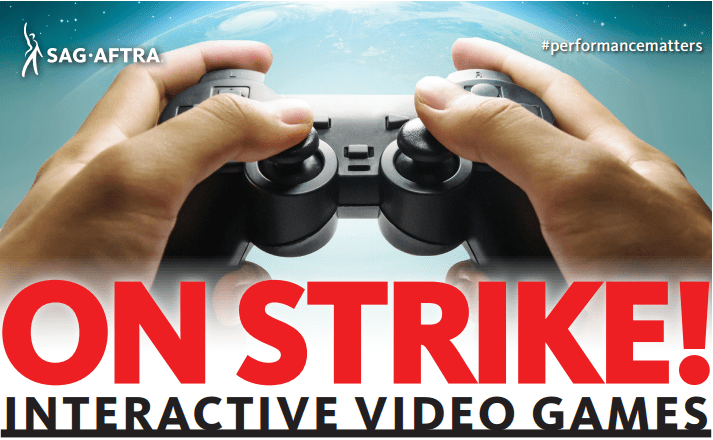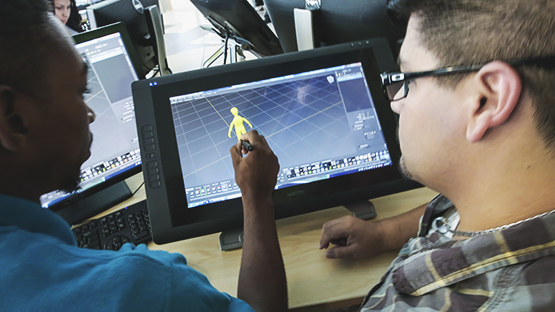Games have grown up a lot in the past 30 years. They’ve progressed on many fronts, including narrative complexity, but to accurately and efficiently develop their stories, game developers do not rely solely upon the writers that work with them. Instead, it is equally crucial to have talented voice actors bring characters to life in order to ensure scripts live up to their potential.
Nowadays, with the gaming industry predominantly focused on male protagonist, developers often look to two actors — Troy Baker and Nolan North. This produces a lack of diversity, and it may seem detrimental to the medium, because these two actors get “recycled” for almost every major AAA release, but this is not as bad for players as it may initially seem.
Here is why
First and foremost, the two actors mentioned herein get hired by so many AAA studios for a reason — they can change their voices to suit virtually any type of character or situation. This is the reason why Booker DeWitt from BioShock Infinite does not sound identical to Joel from The Last of Us, despite both characters being voiced by Troy Baker.
The video below shows the flexibility of Baker’s voice in detail as he performs roles for which you perhaps did not even know he was responsible:
We conclude that the reuse of Troy Baker and Nolan North in various AAA titles is not a fact players should be concerned about, given that these actors can change their voices and become unrecognizable to the audience.
Whilst for the players this may not represent a problem, this scenario is a big concern for those who aspire to start a career in the video game industry as voice actors.
Given the short list of actors that most studios regard as “go-to resources,” this limits the possibility of a novice actor receiving his first big break, as studios are not willing to move away from the “Troy Baker-Nolan North comfort zone.”
As the website Acting London states in its article “A Career in Voice Over for Video Games,” in order to start a career with video games, it is advised to begin working in another industry, in order to get your work recognized therein.
Landing an acting role in the video game industry is possible, if you reach a performance in other mediums that the AAA studios cannot ignore.
This situation; however, shows a problem with the video game industry that is more sinister than merely reusing actors because they excel in their crafts.

Going on a strike:
On October 21, video game voice actors, associated with the Screen Actors Guild‐American Federation of Television and Radio Artists (SAG-AFTRA) went on a strike and upon publishing an official notice, stopped working with the following developers:
• Activision Productions, Inc.
• Blindlight, LLC
• Corps of Discovery Films, Inc.
• Electronic Arts Productions, Inc.
• Disney Character Voices, Inc.
• Formosa Interactive LLC
• Insomniac Games, Inc.
• Interactive Associates, Inc.
• Take 2 Productions, Inc.
• VoiceWorks Productions, Inc.
• WB Games, Inc.
The reasons why the actors decided to go on a strike against these studios range from lack of safe working conditions to underpayment. As of today, a consensus has not been reached between the developers and the union, which stands in a strike.
This scenario shows the working conditions under which actors operate in the video game industry and reveals the reason why so few voice actors stand out in it. Due to the working conditions, the majority of professionals tend to focus on other mediums.
The official document by SAG-AFTRA details the reasons for the strike and the entity shares two points, among others:
– Safety on the set:
“Unlike other entertainment industry employers, video game employers often do not hire the required stunt coordinator on set, which puts performance capture and stunt performers at safety risks. Many actors feel unsafe without a stunt coordinator because they are often asked to do things that could potentially be dangerous to themselves or others. For example, once, without a stunt coordinator on set, a video game developer tried to do a wire pull — which means he basically made himself jerk really hard and fast across a room — without someone on set to monitor his safety. He, of course, got hurt and couldn’t go back to work for a long while. This is just one instance among many”
– Voice Actors Face Debilitating Injury:
“Vocal safety is a growing concern. An increasing number of SAG-AFTRA voiceover artists report experiencing medical disorders of the vocal cords resulting from their work in video games due to the intensity of the vocal demands. Voiceover actors are being asked to perform many challenging vocal tasks, such as simulating painful deaths, creature voices, battle sounds, and screams and shrieks, with significant force and explosive vibration. Actors are reporting that they are fainting in sessions, tasting blood, vomiting, losing their voice for a day up to several weeks, permanently losing their vocal range, et cetera. Our proposal is that vocally stressful sessions be reduced from the current four-hour session to a two-hour session without a loss of pay.”
Working conditions in this industry must change:
This holds true not only for acting. This reflects the reality of the working conditions in the video game industry as a whole. The video below from Extra Credits get into detail, but the average career in the video game industry lasts for only five years, according to the video.
To deliver AAA experiences, many studios rely on 12 hours shifts, seven days per week. Initiatives such as the strike of voice actors, through SAG-AFTRA, aim to revert this scenario, but this industry still has a long way to go in regards to working conditions.
This happens because the industry grew too fast. In the last 20 years, video games went through a transformation, creating larger worlds, better graphics and more compelling narratives and creating these requires a lot of labor.
The problem is that the legislation that regulates the working conditions in this medium has not evolved as fast.
The SAG-AFTRA is an example of this. The original agreement between the entity and the video game developers dates back to 1994. The reality has changed since then and the guidelines from that agreement no longer apply to the highly demanding reality of today.

Conclusion:
As the title of this article claims, “yes, voice actors get re-used all the time and that is okay,” but it is only okay if you look at this from the perspective of the player. These actors can deliver a wide range of voices; therefore, players most likely will not notice that they are being re-used.
The actual problem lies elsewhere.
Despite the success of gaming, artists usually prefer to work in other mediums, where they will face better working conditions and this is the problem.
Professionals of this industry must stand up to their work and demand better working conditions, otherwise many talents will be driven away, including voice actors, writers, designers and so on.
In order to nourish a better future for gaming, this industry needs to become more attractive to the geniuses of our time, so they join forces and work in the gaming masterpieces of the future.
With this said, regarding the future of this industry, “yes, voice actors get-reused all the time” and that is not okay.







Published: Dec 18, 2016 07:44 am